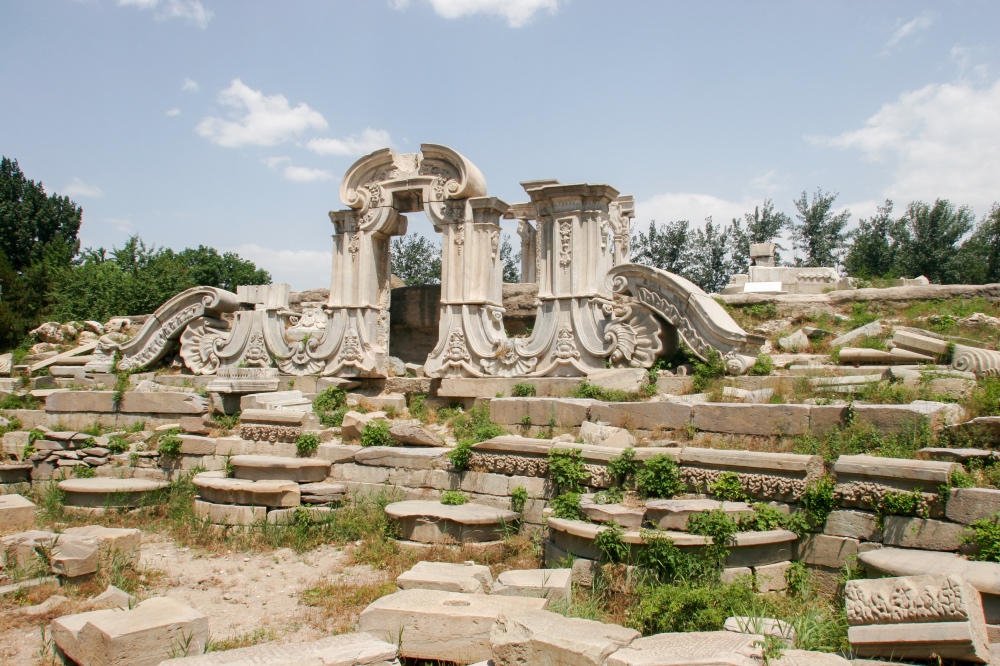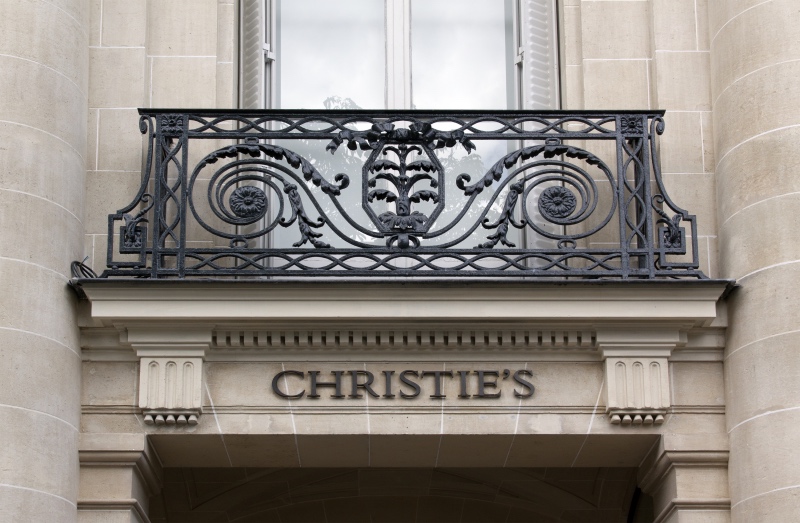
Restoring a nation
Yuanmingyuan and China’s journey to recover its lost art
by Pei Ying LohWhen the Notre-Dame in Paris went up in flames this April, there was an outpouring of grief all across the globe. People lamented the loss of the 850-year-old Gothic building that has seen France through revolutions, and a wave of nostalgic photo-sharing swept across social media.

Credit: Fareez Rahmat
There was a very different response halfway across the world. Some Chinese netizens took to Weibo to compare the burning of the Notre Dame to the destruction of the Old Summer Palace in China, suggesting that the latter was far worse. Others suggested it was karma.
The Old Summer Palace is known to the Chinese as Yuanmingyuan (圆明园). Its English name is misleading, because it is not a single building. The name means ‘Gardens of Perfect Brightness’, and it was a complex of palaces and gardens in modern-day Beijing, China.
Built over the course of the 18th century, Yuanmingyuan embodied the best of the Qing empire, and it was regarded to be the pinnacle of Chinese architecture. It was the main imperial residence for the Qianlong Emperor and his successors. It also housed the country’s art and historical treasures, some dating back two millennia.

Emperor’s Private Residence. 九州清宴 (Nine Continents Clear and Calm). The 40 scenes of Yuanmingyuan. Commissioned by Qianlong, painted by Shen Yuan, Tangdai, Wang Youdun. 1744, painting on silk. Image from MIT Visualizing Culture.
In 1860, during the Second Opium War, French and British troops stormed Yuanmingyuan in retaliation to Chinese resistance, and systematically destroyed it. Yuanmingyuan was so vast, that the destruction required 4500 men over three days to complete the task.
The destruction was completely intentional and it was meant to teach a lesson. What was China’s crime? Resisting the influence of Western powers. Ironically, the decision to plunder was made by the British High Commissioner to China, Lord James Bruce Elgin (whose father notoriously took the Parthenon marbles from Greece). So savage was the act, that even the famed French poet Victor Hugo criticised it in 1861.
Yuanmingyuan has been left intentionally and visibly ruined to this day. It represented the peak of Chinese might, and a repository for Chinese culture. Now it is a hollow echo of the past, left to remind all Chinese of what is known as the Century of Humiliation.

The Yuanmingyuan represented some of the most beautiful architecture in all of China, and included styles from different ethnicities. Today, the most common image associated with it is the rubble left from Western-style buildings, leading to the misconception that the palace grounds were made from European design only. As the Western-style buildings were made of stone or marble while other structures were made of wood, it endured the fire.
The events that happened during China's Century of Humiliation
The act of remembering is a deliberate one. Today, Yuanmingyuan has been turned into a park so that visitors may wander its grounds and see the ruins for themselves. They are left to imagine what it must have been before. There are signs erected by the Chinese government, describing the historical humiliation that China had to endure. Yuanmingyuan has come to symbolise foreign dominance, western imperialism, and national weakness. The sentiment is clear: never again.
Yuanmingyuan was not only destroyed, but extensively looted as well. Whatever the soldiers could not carry with them, they destroyed. Chinese sources estimate that over a million objects were lost. A significant number of stolen artefacts are in over 200 museums across the world today.
It did not take long for these objects to show up in Europe. A number of them were sold at auctions, marketed as ‘Chinese curiosities’ taken from the famous Summer Palace of Pekin. But the most significant pieces were given to royal families.

FRIEDRICH WILHELM KEYL (1823-71), Looty. Signed and dated 1861, Oil on canvas, The Royal Collection Trust. Queen Victoria’s Pekingese dog, aptly named Looty in reference to the bountiful loot that British troops took home. Found by Captain John Hart Dunne near the grounds of Yuanmingyuan in the aftermath of its destruction, this dog was presented to Queen Victoria as a gift.
Perhaps the most painful reminder of the humiliation suffered at Yuanmingyuan is in the Chinese Museum of the Château de Fontainebleau, where most of the stolen artefacts are now held. The French were responsible for much of the looting, and a large number of treasures—including porcelain, jades, bronzes and more—were gifted to Napoleon III and Empress Eugénie. So extensive was the loot that Empress Eugénie had entire rooms devoted to housing her new prized treasures.

Chinese Museum at the Château de Fontainebleau. Image from MIT Visualizing Cultures.
Looting is a common practice in wartime all across the world. In the colonial era, it was sanctioned by the military and may have been essential to a soldier’s livelihood. Sometimes, the plunder was pooled in an auction, and the prize money distributed among soldiers and officers according to rank.
The European powers took cultural relics from the places they colonised; the Rosetta Stone from Egypt, the Benin bronzes from Nigeria, the Parthenon Marbles from Greece, and the Kohinoor Diamond from India (now part of the British Crown Jewels). There is growing momentum across the world asking for these items to be returned.
Museums such as the Louvre and the British Museum are repositories of colonial enterprise. Artefacts belonging to the conquered are displayed in beautiful showcases, offered as objects of study and research. But these items carry meaning, and are a part of cultural and ritual life. For example, the Eastern Island statues are physical embodiments of ancestral spirits, treated as one’s grandfather or grandmother. Removed from their social context, they become devoid of their power and are treated as atemporal objects.

In 2008, two bronze heads surfaced for an auction at Christie’s, Paris. They were two of a dozen bronze heads; a zodiac series that sat at a fountain in Yuanmingyuan. Designed by Giuseppe Castiglione, a Jesuit missionary who served at the Qing Court, these zodiac heads were likewise looted. They have become one of the most recognizable artworks of Yuanmingyuan; it has inspired a work of art by the Ai Weiwei and a movie.

Water-clock fountain at the Hall of Calm Seas (Haiyantang 海宴堂) palace. Image from MIT Visualising Cultures.
The announcement of the auction was met with tremendous fury in China. Lawsuits were filed. Despite this, Christie’s went ahead with the auction, and the winning price was at 28 million Euros, made via an anonymous telephone bid. That bidder turned out to be Chinese collector Cai Mingchao. Cai refused to pay the hammer price, and revealed that he merely wanted to sabotage the auction as a form of protest on China’s behalf.
Cai is not alone in his endeavour to bring home China’s lost art. In the last decade, China’s economic boom has seen the rise of a new wealthy class. Several billionaires have been actively purchasing Chinese art from auctions to return them to Chinese museums, in part as a display of wealth, but also as an act of patriotism. In 2014, real estate developer Huang Nubo donated US$1.6 million to a museum in Norway in exchange for the return of seven marble columns taken from Yuanmingyuan.
The Communist government does not encourage nostalgia. It recently banned period dramas for fear that the extravagant lifestyles of monarchs will dilute the “virtues of frugality and hard work”. Whatever the Chinese government’s intentions were in preserving Yuanmingyuan as a site of devastation, their efforts clearly paid off.

Monkey and Ox heads that were part of a water clock at Haiyantang, in the western-style grounds of Yuanmingyuan. Image from MIT Visualising Cultures.
There is no doubt that the government and citizens of China are determined to get their cultural artefacts back. Since 2009, the Old Summer Palace Administration has been sending Chinese experts around the world to track down its stolen art. A book listing almost all the identified items housed in different museums was also published. A major story published by GQ suggests that there might be more to the multiple art robberies in Europe, which specifically targeted Chinese art. The return of lost art, especially through economic means, represents a return of Chinese power and pride. The Chinese government encourages this sentiment because it strengthens their legitimacy, both at home and on the world stage.
The two bronze heads were eventually donated to China in 2013 by French billionaire Francois Pinault. They joined five others at the Poly Art Museum in Beijing, of which three were purchased by China Poly Group Corporation, and two bought and gifted by casino tycoon Stanley Ho. The other location of the other five heads remains unknown. The Chinese are definitely looking for them, and until they return to China, there will always be a sense of incompleteness. This feeling although seemingly foreign, is not too different from those echoed when the Notre-Dame was burnt.








